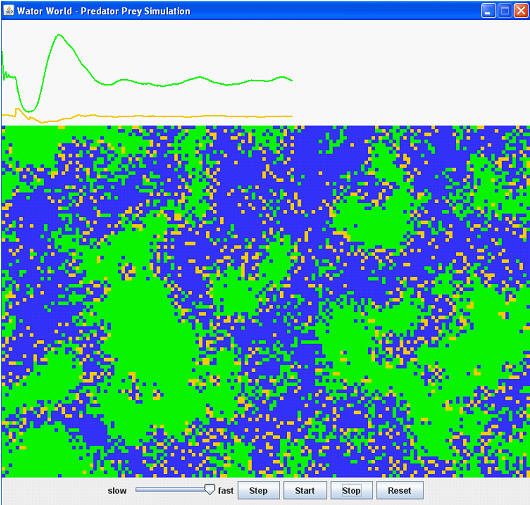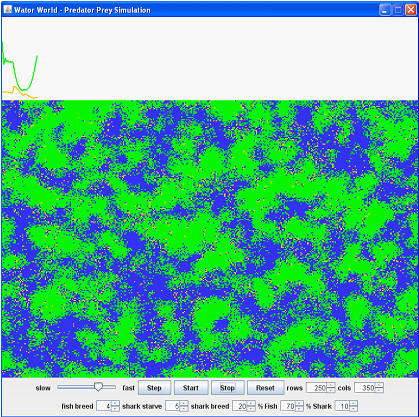

Wa-Tor World Assignment
Mike Scott, University of Texas at Austin, scottm@cs.utexas.edu


Description and Meta Data
| Summary | Implement a program that carries out the simulation proposed by A.K. Dewdney is his article Sharks and Fish Wage an Ecological War on the Toroidal Planet Wa-Tor, Scientific America Computer Recreations column. (Available in the book The Armchair Universe.) Wa-Tor World a biological simulation of two species with various parameters such as time between breeding and time before starving. The assignment focuses on creating a GUI to display the simulation. The simulation itself is built on the College Board's APCS GridWorld case study. |
| Topics | Construction of GUIs. Data transformation and visualization. Object based programming. Variations could emphasize 2D array operations, OOP concepts (inheritance and polymorphism). |
| Audience | Late CS1, early CS2, or non CS majors graphics class. |
| Difficulty | Varies with amount of code provided. Starting from scratch, this would be a difficult assignment. (multiple assignments over many weeks.) The version presented is relatively simple because the simulation is already provided. Two weeks for non CS majors to complete the assignment. |
| Strengths |
Strengths include:
|
| Weaknesses |
Weaknesses include:
|
| Dependencies | Varies with version of assignment.
|
| Variants | As described: 1. Whole thing from scratch. 2. Just the GUI. 3. Just the simulation. (Give the GUI, give the APCS GridWorld Code.) |
Support Material:
Slides from presentation at SIGCSE: PowerPoint or PDF
Assignment handout I use in my graphics class for non CS majors
Directory with current version of assignment source code (Uses APCS GridWorld code)
All the starter code in a zip file
Javadoc for the simulation code
Executable jar version of program
Extra info about this assignment: